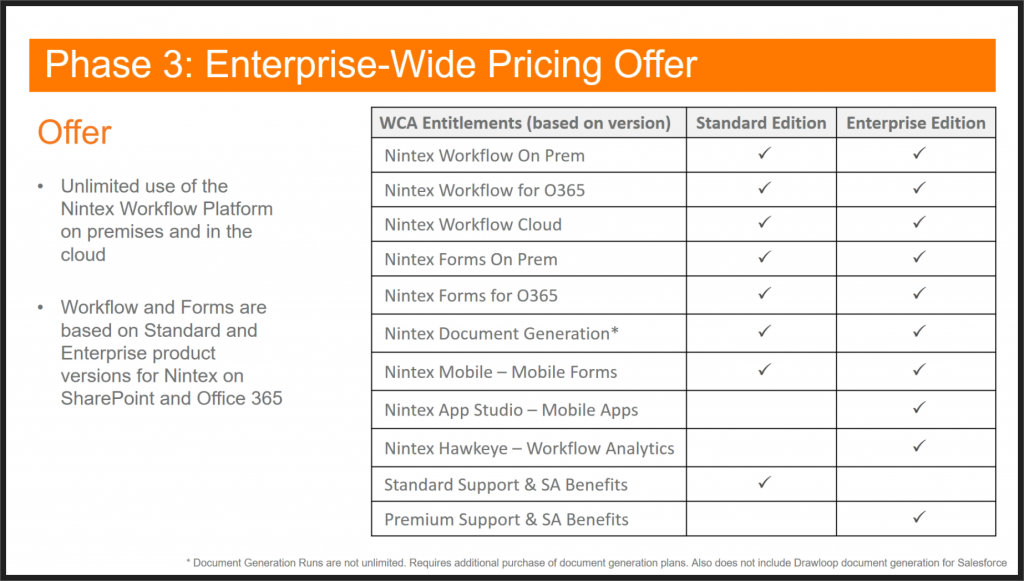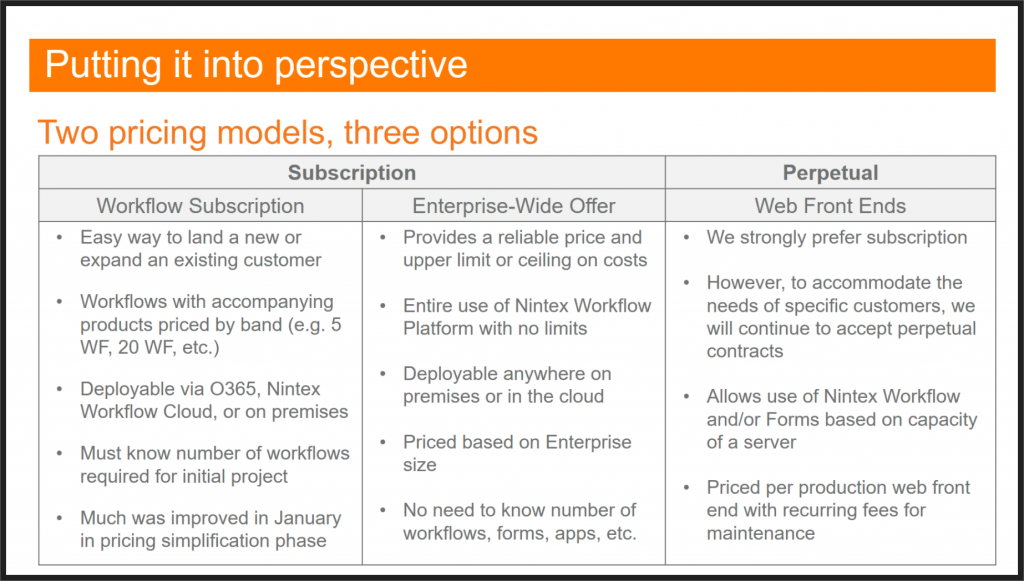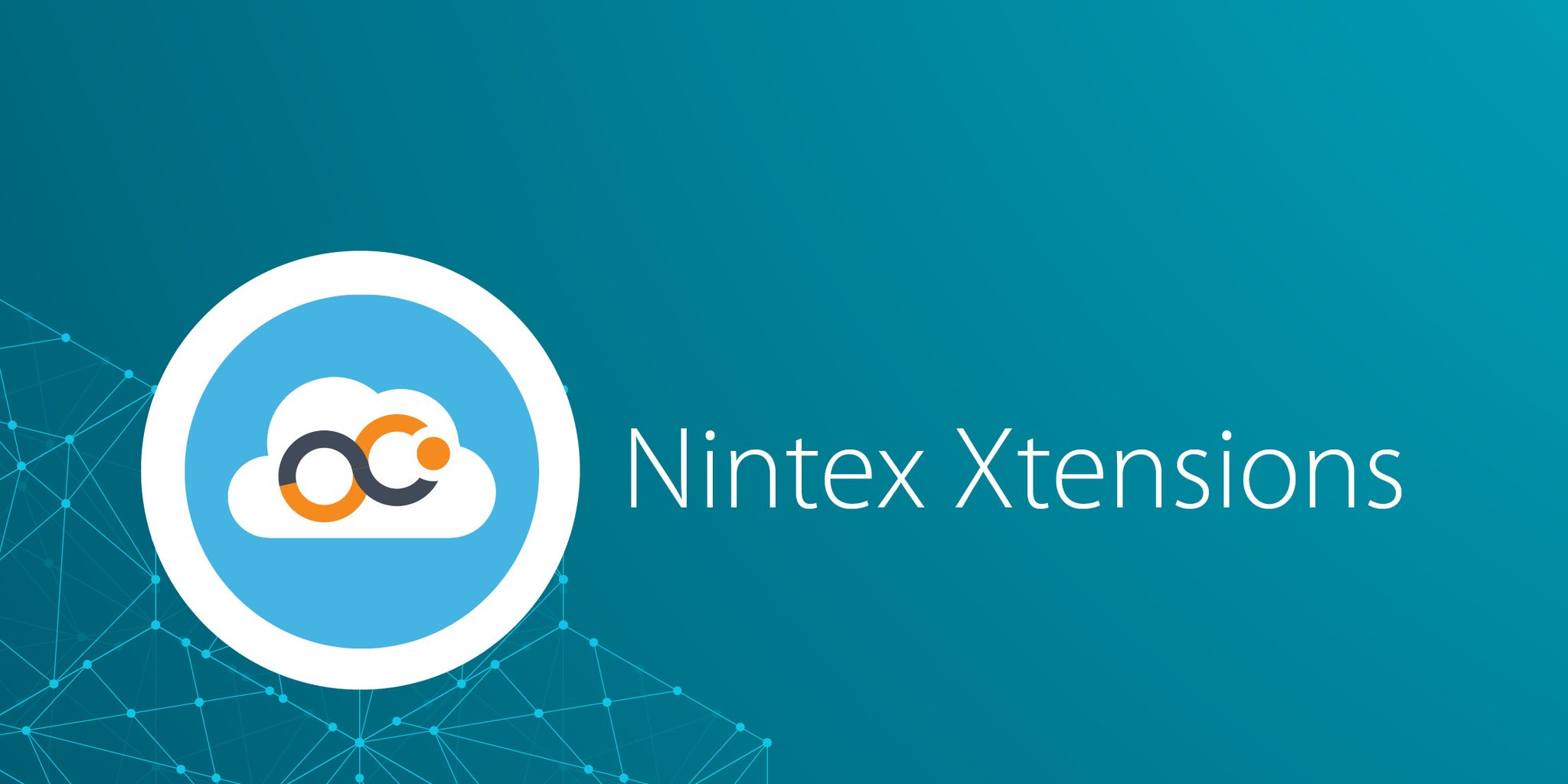
Nintex licensing models revised
Table of contents:
Nintex subscription based pricing model is evolving since the beginning (since July 2016, when it was first announced). In January 2017 it has had it’s first major update. That time Nintex introduced such changes, as:
- No more workflow action limits (before it was 50 per workflow)
- Increased allocation of Dev/Test Workflows and Forms
- The new Grace Period Policy allowing customers to use Nintex for 60 days without being charged
- The Nintex Cloud Accelerator Program (NCAP) was introduced
- Small workflows (5 or less actions, no “Start a workflow” action inside) are not counted
[tds_note] Want to learn more about the Nintex licensing and prices? Contact me![/tds_note]
At that time only two licensing models were available: Perpetual (server based) and Subscription (Workflow based), of course in “Standard” and “Enterprise” versions (the difference is on the type of available actions and limits). The Perpetual licensing was (and is) more recommended for “on-premise” only customers, it is priced per each server being in a WFE (Web Front End) role in your SharePoint Farm. The Subscription licensing on the other hand is a cross-environment pricing model, where the purchased amount of workflows can be used in Office 365, Nintex Workflow Cloud and on-premise as well. The other major difference is, that in Perpetual model there is a separate license per each product: Workflow, Forms, App Studio, Hawkeye, etc… whereas in the Subscription all applications are already covered.
In April 2017 Nintex started their journey with Nintex Roadshows visiting all major cities all over the world, spreading news from their InspireX Conference in New Orleans. One of the news, however not revealed till today, was a change to the licensing model. So, since today, it’s official, that a new licensing model is available: Enterprise-Wide Workflow Plan.
Enterprise-Wide Workflow Plan
The story behind the plan is that sometimes large organizations has a small number of workflows subscribed, but they are using them excessively, heavily ladening Nintex infrastructure, but paying relatively small license money, so that the profit-loss from Nintex perspective was negative. The new plan is dedicated then to large enterprises, willing to create as many workflows as needed, but then to pay only for the number of employees. During the presentation Michael Lovelock was not able to clearly explain who is considered as an “employee”, but in the end, it’s more or less:
A flexible and demanding conversation (between customer and Nintex) “understanding” of a person actively using the worklfow
So in that “understanding” an “employee” can be anyone from your organization, as well as an external customer having an access to data on your tenant, using products you are subscribing from Nintex.
The thresholds are:
- <= 200 employees
- 201 – 500 employees
- 501 – 999 employees
- 1 000 – 2 499 employees
- 2 500 – 4 999 employees
- 5 000+ employees
The prices are from 18 833 € annually for a Standard license, for the first limit, up to 235 800 € annually for an Enterprise license for the penultimate limit. For the last limit it is said to be “custom”. What are the differences between Standard and Enterprise here:
Comparison of the available models
Just a short comparison of available licensing models.
More information is provided in the webcast: https://info.nintex.com/WBR-EMEA-UKINordicsPricingUpdate-May2017_LP-ThankYouRecording.html





